Lunar Eclipse [1/31/2018] - For More Images Of The Cosmos Click Here
![Lunar Eclipse [1/31/2018] - For More Images Of The Cosmos Click Here](https://64.media.tumblr.com/e0ad6745a96d1016353dcadebf29f24e/tumblr_p3kjfp38IV1w094hwo1_500.jpg)
Lunar Eclipse [1/31/2018] - For more images of the cosmos Click Here
More Posts from Stars-and-shitt-blog and Others
What’s Up - February 2018
What’s Up For February?

This month, in honor of Valentine’s Day, we’ll focus on celestial star pairs and constellation couples.

Let’s look at some celestial pairs!

The constellations Perseus and Andromeda are easy to see high overhead this month.

According to lore, the warrior Perseus spotted a beautiful woman–Andromeda–chained to a seaside rock. After battling a sea serpent, he rescued her.

As a reward, her parents Cepheus and Cassiopeia allowed Perseus to marry Andromeda.

The great hunter Orion fell in love with seven sisters, the Pleiades, and pursued them for a long time. Eventually Zeus turned both Orion and the Pleiades into stars.

Orion is easy to find. Draw an imaginary line through his belt stars to the Pleiades, and watch him chase them across the sky forever.

A pair of star clusters is visible on February nights. The Perseus Double Cluster is high in the sky near Andromeda’s parents Cepheus and Cassiopeia.

Through binoculars you can see dozens of stars in each cluster. Actually, there are more than 300 blue-white supergiant stars in each of the clusters.

There are some colorful star pairs, some visible just by looking up and some requiring a telescope. Gemini’s twins, the brothers Pollux and Castor, are easy to see without aid.

Orion’s westernmost, or right, knee, Rigel, has a faint companion. The companion, Rigel B, is 500 times fainter than the super-giant Rigel and is visible only with a telescope.

Orion’s westernmost belt star, Mintaka, has a pretty companion. You’ll need a telescope.

Finally, the moon pairs up with the Pleiades on the 22nd and with Pollux and Castor on the 26th.
Watch the full What’s Up for February Video:
There are so many sights to see in the sky. To stay informed, subscribe to our What’s Up video series on Facebook.
Make sure to follow us on Tumblr for your regular dose of space: http://nasa.tumblr.com.
(In a cheerful cowboy voice while slapping my knee) well beam me up Scotty!

Supermoon, November 2016.
Credit: Rafael Compassi

Kirk: Don't worry, Spock. We're with you!
Bones: Are we?
Kirk: Yes.



22/04/18. I got great pictures of the moon through my telescope
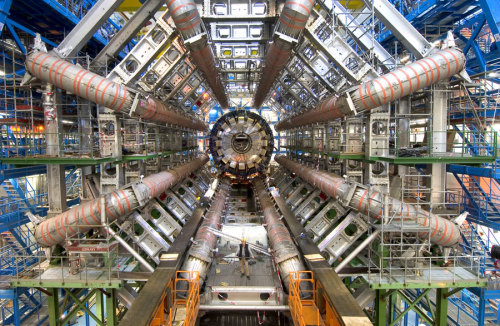
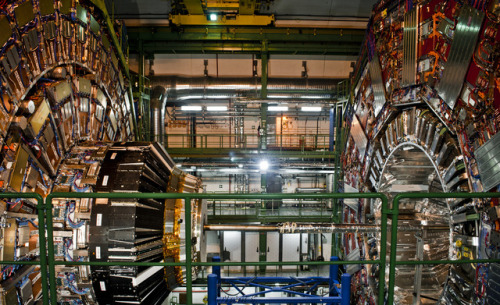
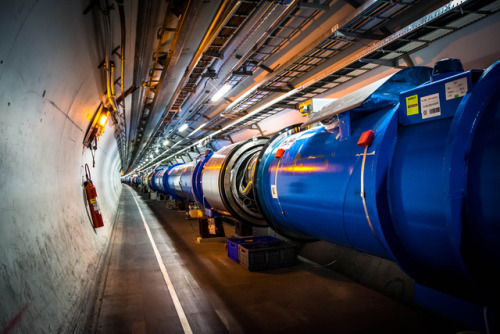
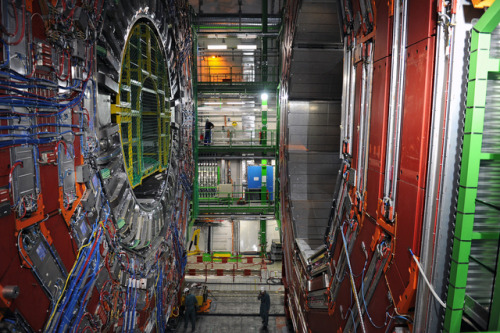
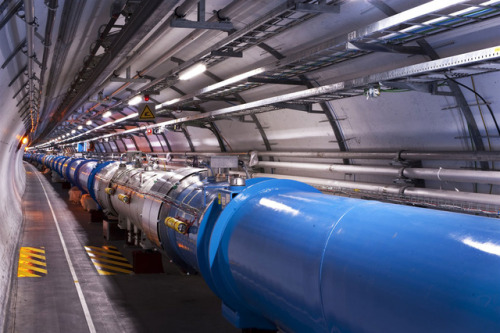
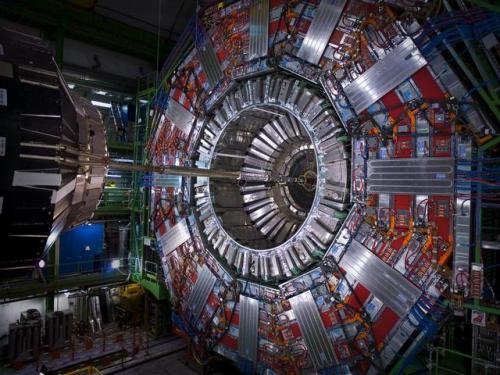
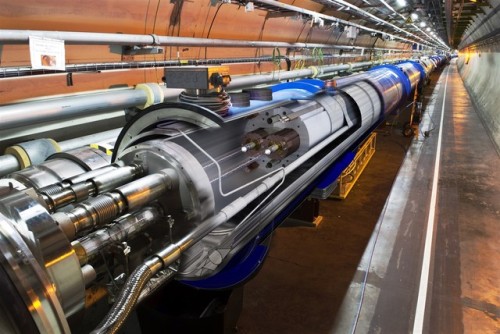
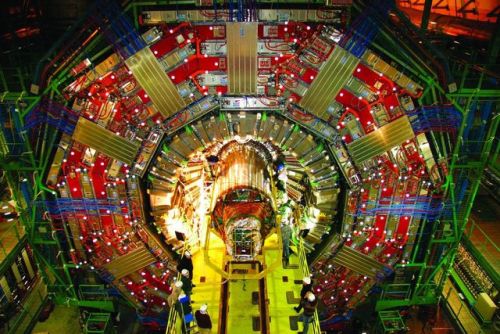
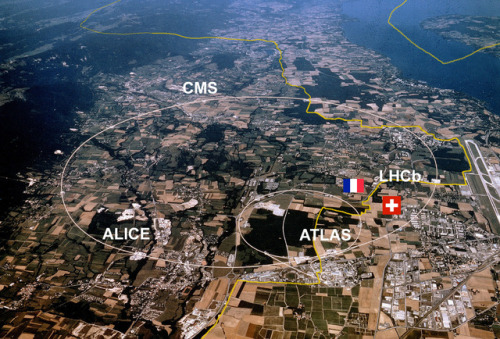
The Large Hadron Collider
The Large Hadron Collider (LHC) is the world’s largest and most powerful particle collider, the most complex experimental facility ever built, and the largest single machine in the world. It was built by the European Organization for Nuclear Research (CERN) between 1998 and 2008 in collaboration with over 10,000 scientists and engineers from over 100 countries, as well as hundreds of universities and laboratories. It lies in a tunnel 27 kilometres (17 mi) in circumference, as deep as 175 metres (574 ft) beneath the France–Switzerland border near Geneva.
The aim of the LHC is to allow physicists to test the predictions of different theories of particle physics, including measuring the properties of the Higgs boson and searching for the large family of new particles predicted by supersymmetric theories, as well as other unsolved questions of physics.
All the controls for the accelerator, its services and technical infrastructure are housed under one roof at the CERN Control Centre. From here, the beams inside the LHC are made to collide at four locations around the accelerator ring, corresponding to the positions of four particle detectors – ATLAS, CMS, ALICE and LHCb.
Image credit: CERN, FermiLab (Vlad Savov, Julien Nyczak, Maximilien Brice).
source
Click here to learn more
Earth: Your Home, Our Mission
We pioneer and support an amazing range of advanced technologies and tools to help us better understand our home planet, the solar system and far beyond.
Here are 5 ways our tech improves life here on Earth…
1. Eyes in the Sky Spot Fires on the Ground

Our Earth observing satellites enable conservation groups to spot and monitor fires across vast rainforests, helping them protect our planet on Earth Day and every day.
2. Helping Tractors Drive Themselves

There has been a lot of talk about self-driving cars, but farmers have already been making good use of self-driving tractors for more than a decade - due in part to a partnership between John Deere and our Jet Propulsion Laboratory.
Growing food sustainably requires smart technology - our GPS correction algorithms help self-driving tractors steer with precision, cutting down on water and fertilizer waste.
3. Turning Smartphones into Satellites

On Earth Day (and every day), we get nonstop “Earth selfies” thanks to Planet Labs’ small satellites, inspired by smartphones and created by a team at our Ames Research Center. The high res imagery helps conservation efforts worldwide.
4. Early Flood Warnings

Monsoons, perhaps the least understood and most erratic weather pattern in the United States, bring rain vital to agriculture and ecosystems, but also threaten lives and property. Severe flash-flooding is common. Roads are washed out. Miles away from the cloudburst, dry gulches become raging torrents in seconds. The storms are often accompanied by driving winds, hail and barrages of lightning.
We are working to get better forecasting information to the National Oceanic and Atmospheric Administration (NOAA). Our satellites can track moisture in the air - helping forecasters provide an early warning of flash floods from monsoons.
5. Watching the World’s Water

Around the world, agriculture is by far the biggest user of freshwater. Thanks in part to infrared imagery from Landsat, operated by the U.S. Geological Survey (USGS), we can now map, in real time, how much water a field is using, helping conserve that precious resource.
We use the vantage point of space to understand and explore our home planet, improve lives and safeguard our future. Our observations of Earth’s complex natural environment are critical to understanding how our planet’s natural resources and climate are changing now and could change in the future.
Join the celebration online by using #NASA4Earth.
Make sure to follow us on Tumblr for your regular dose of space: http://nasa.tumblr.com.

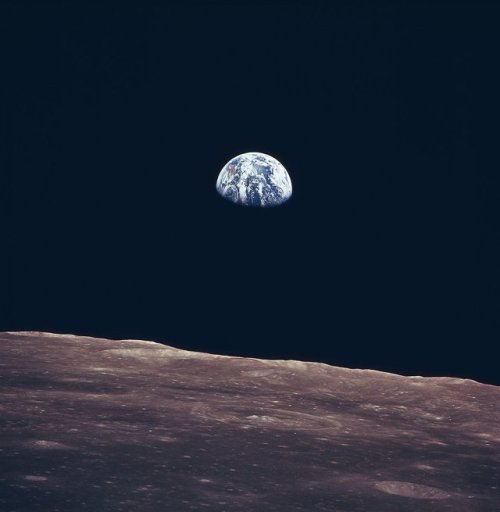


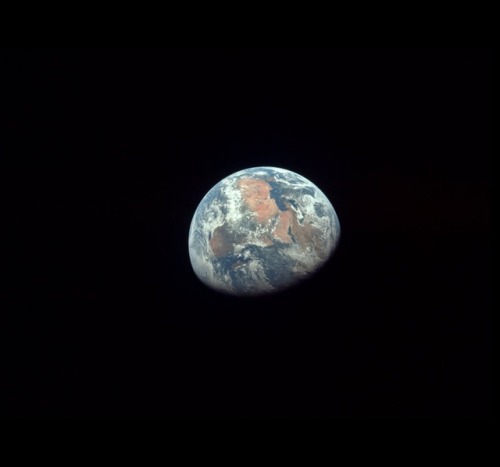

Happy Earth day! (Let’s take care of our planet while there’s time)
Image credit: NASA, Mission Apollo, STS-103, Lunar module & Cassini
-
 plumv-blog liked this · 7 years ago
plumv-blog liked this · 7 years ago -
 bishopsprodigal reblogged this · 7 years ago
bishopsprodigal reblogged this · 7 years ago -
 eskalation-pur reblogged this · 7 years ago
eskalation-pur reblogged this · 7 years ago -
 scene-kid-to-hipster-pipeline liked this · 7 years ago
scene-kid-to-hipster-pipeline liked this · 7 years ago -
 ananastus reblogged this · 7 years ago
ananastus reblogged this · 7 years ago -
 theunemployedrogue reblogged this · 7 years ago
theunemployedrogue reblogged this · 7 years ago -
 maggot-withanf reblogged this · 7 years ago
maggot-withanf reblogged this · 7 years ago -
 theguttgrinder reblogged this · 7 years ago
theguttgrinder reblogged this · 7 years ago -
 theguttgrinder liked this · 7 years ago
theguttgrinder liked this · 7 years ago -
 sprinqdays-remade reblogged this · 7 years ago
sprinqdays-remade reblogged this · 7 years ago -
 kaerired-blog reblogged this · 7 years ago
kaerired-blog reblogged this · 7 years ago -
 kaerired-blog liked this · 7 years ago
kaerired-blog liked this · 7 years ago -
 alesandro007-blog liked this · 7 years ago
alesandro007-blog liked this · 7 years ago -
 propaliaesthetic reblogged this · 7 years ago
propaliaesthetic reblogged this · 7 years ago -
 zivot liked this · 7 years ago
zivot liked this · 7 years ago -
 aboveyellow liked this · 7 years ago
aboveyellow liked this · 7 years ago -
 suskeihattori liked this · 7 years ago
suskeihattori liked this · 7 years ago -
 darkfirews reblogged this · 7 years ago
darkfirews reblogged this · 7 years ago -
 darkfirews liked this · 7 years ago
darkfirews liked this · 7 years ago -
 unwieldy4 liked this · 7 years ago
unwieldy4 liked this · 7 years ago -
 lxvexx-xx reblogged this · 7 years ago
lxvexx-xx reblogged this · 7 years ago -
 kipichocha1027-blog liked this · 7 years ago
kipichocha1027-blog liked this · 7 years ago -
 matool94 liked this · 7 years ago
matool94 liked this · 7 years ago -
 amphitrihe liked this · 7 years ago
amphitrihe liked this · 7 years ago -
 xblueboltx liked this · 7 years ago
xblueboltx liked this · 7 years ago -
 mylittleratel-blog liked this · 7 years ago
mylittleratel-blog liked this · 7 years ago -
 stars-and-shitt-blog reblogged this · 7 years ago
stars-and-shitt-blog reblogged this · 7 years ago -
 dalest99 liked this · 7 years ago
dalest99 liked this · 7 years ago -
 savaki00 liked this · 7 years ago
savaki00 liked this · 7 years ago -
 anomaloustarstuff reblogged this · 7 years ago
anomaloustarstuff reblogged this · 7 years ago -
 laurasterisk reblogged this · 7 years ago
laurasterisk reblogged this · 7 years ago -
 dearkurisu liked this · 7 years ago
dearkurisu liked this · 7 years ago -
 waaasss-biiilovah reblogged this · 7 years ago
waaasss-biiilovah reblogged this · 7 years ago
I enjoy telescopes too much for my own good. (PS. my header is fireworks because nothing else fits yet)
38 posts